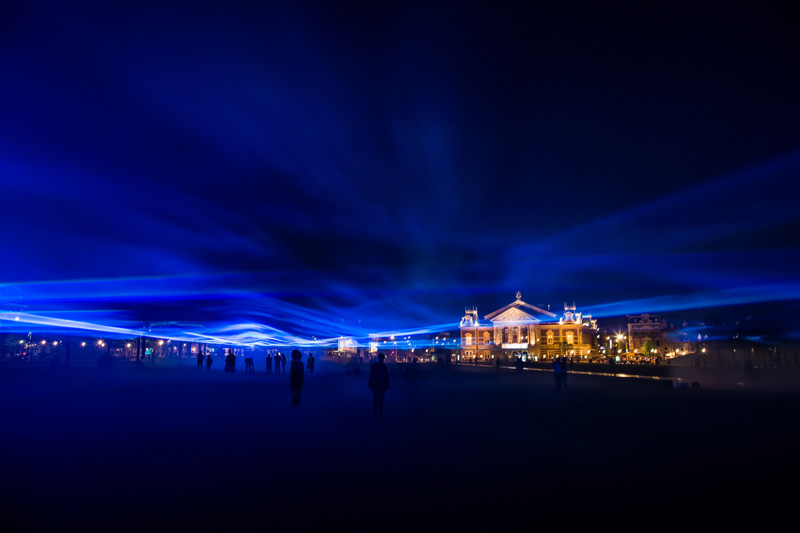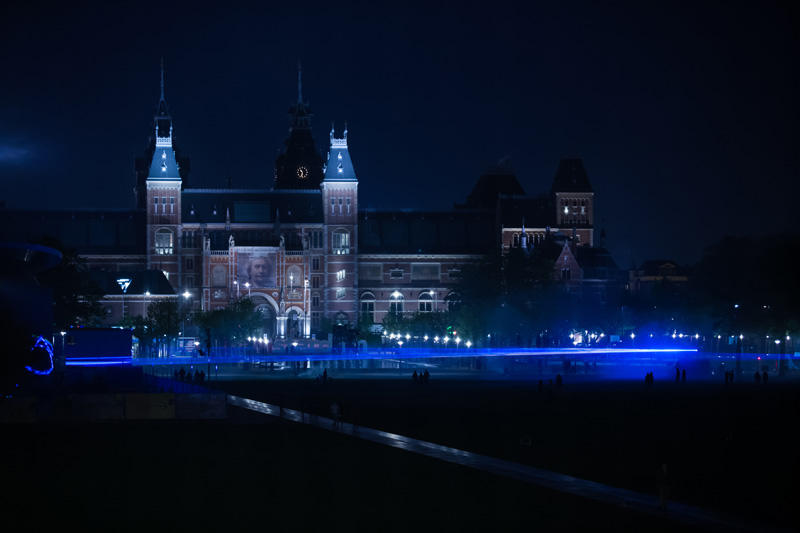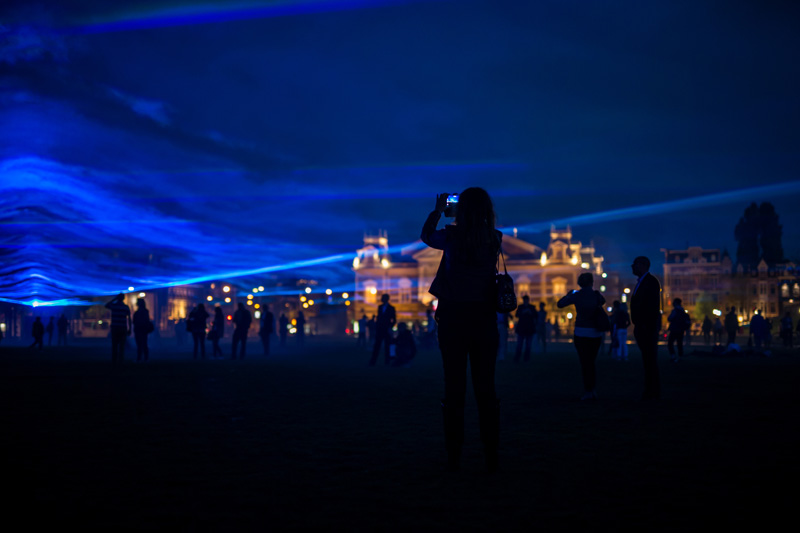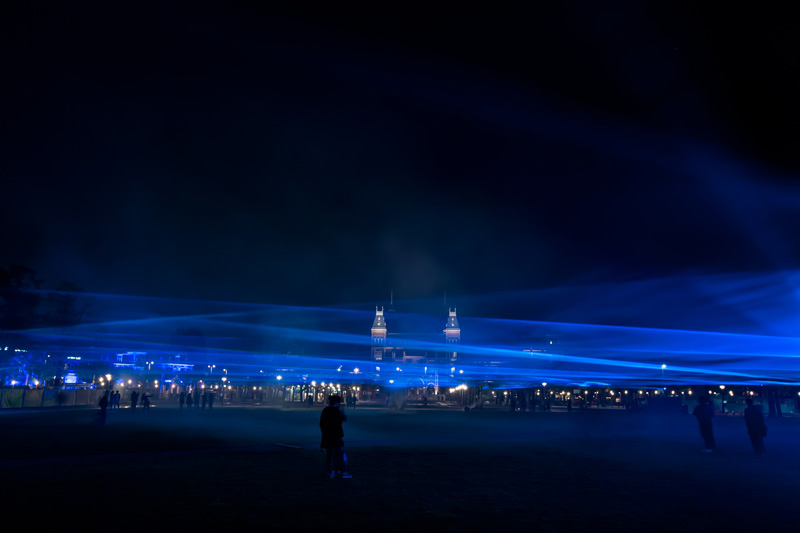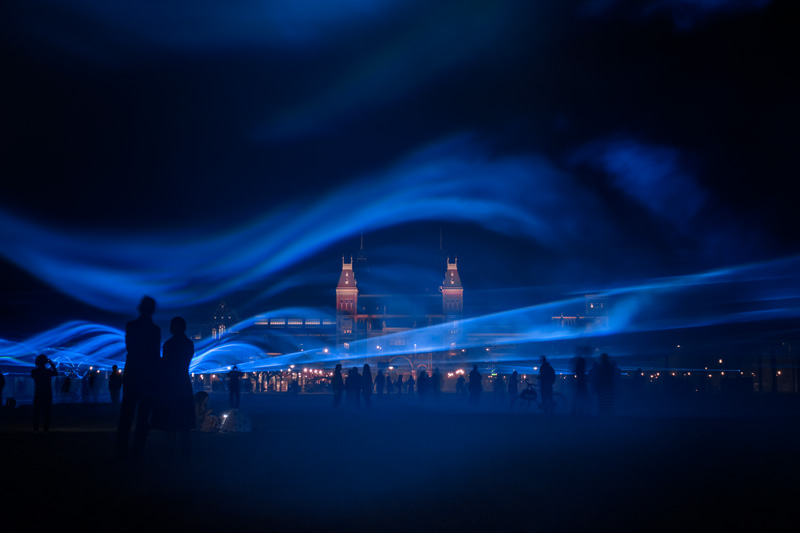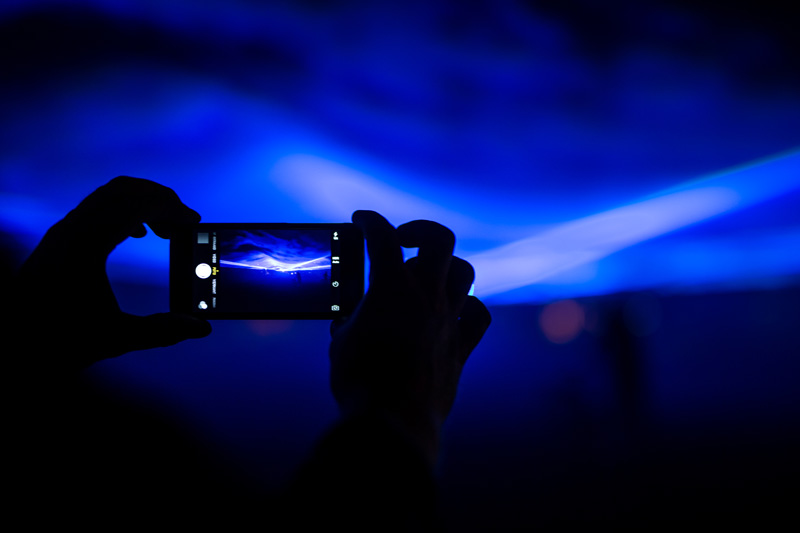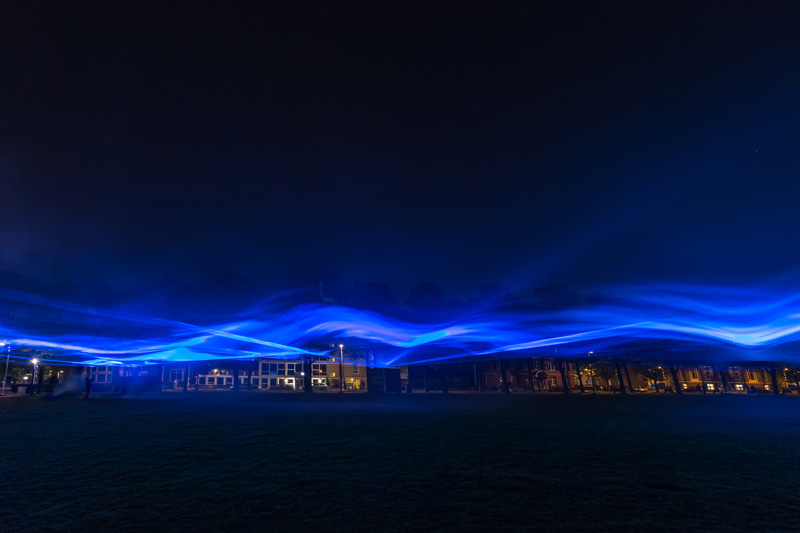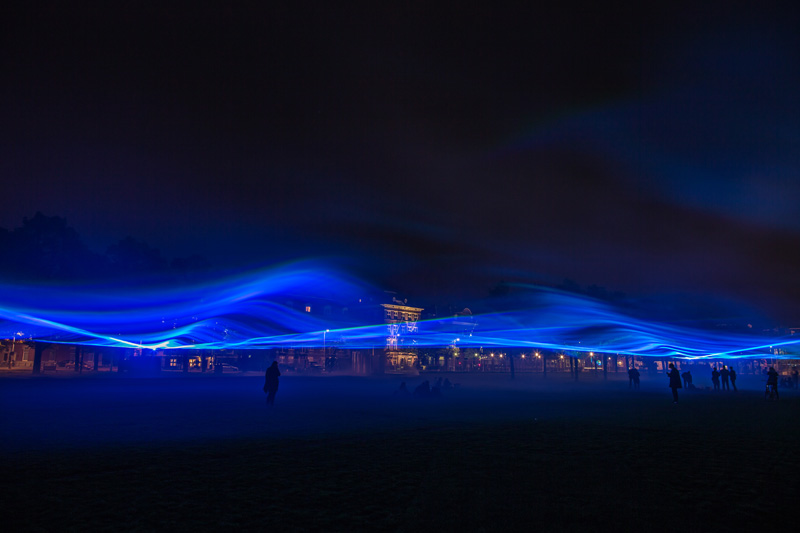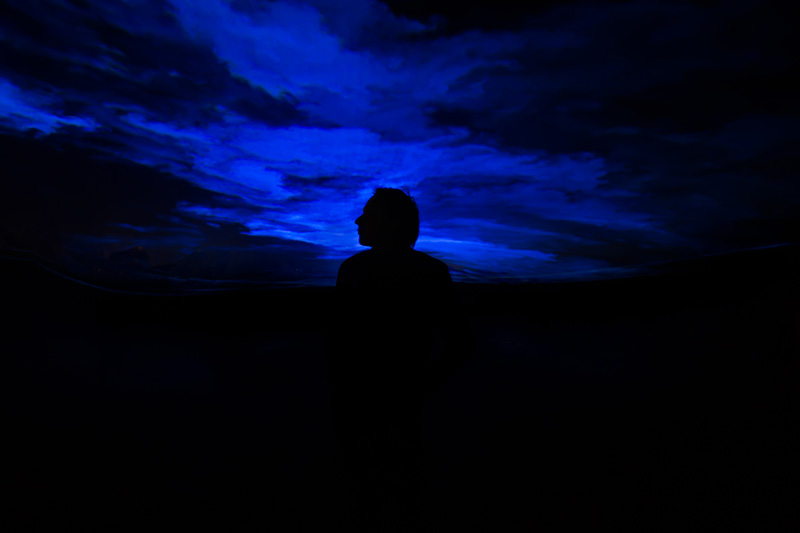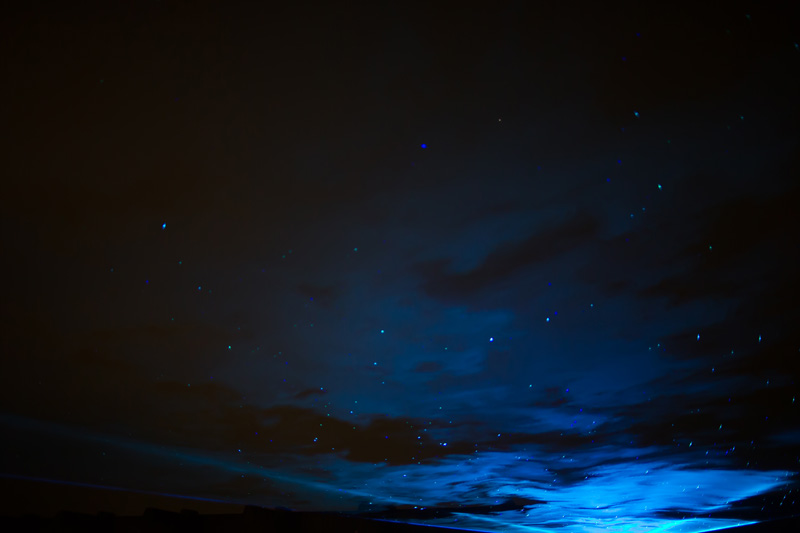Artist Daan Roosegaarde’s latest art work uses some fancy lighting to show what the water level in The Netherlands would look like, if they didn’t have all the waterworks they’re known for.
Spoiler alert: They’d pretty much all be underwater.
About the project
From the 11th till the 13th of May everyone can experience the latest art work by artist and innovator Daan Roosegaarde at the Museumplein in Amsterdam. This inner city square, of almost 8 acres, will be virtually placed underwater during these days. Waterlicht lets the visitor experience the almost forgotten power and vulnerability of water.
This inspired Daan Roosegaarde: “Waterlicht shows how the Netherlands look like without waterworks, a virtual flood. Innovation is seen throughout our landscape, pushed by the waterworks and our history, but yet we’ve almost seem to forgotten this.”
The artwork consists of wavy lines of light, made with the latest LED technology, software and lenses. “Water awareness is crucial, without all our waterworks, the Rijksmuseum for instance could be under water. That is why we support this initiative,” says Gerhard van den Top of the local waterboard.
The recent acquisition by the Rijksmuseum of the 17th century painting by Jan Asselijn of the Amsterdam flood in 1651 was the actual reason for the temporary Waterlicht exhibition. Both works reflect on the water history of the Netherlands and the interaction between man, nature and technology. This created a great connection.
Wim Pijbes general director of the Rijksmuseum explains: “The painting explains clearly the dutch situation: we have always lived under the sea-level”. Nick Jue, CEO of ING Netherlands: “With this special exhibition open for a wide audience, we combine the old painting with the modern ‘Waterlicht’. The exhibition is supported by ING, partner of the Rijksmuseum.
Artist: Daan Roosegaarde
Photography by Studio Roosegaarde/Pim Hendriksen
